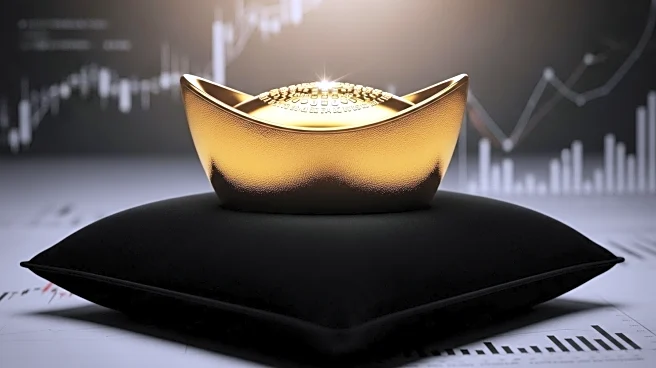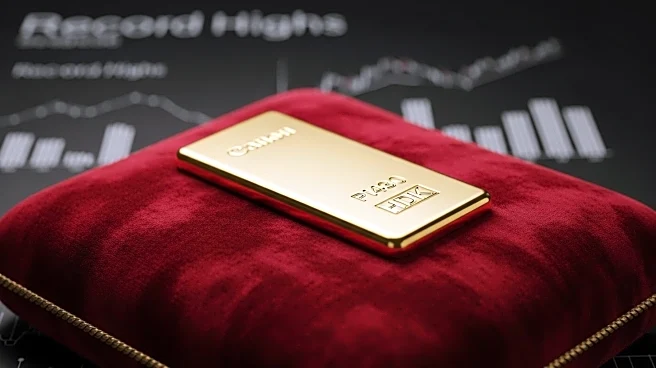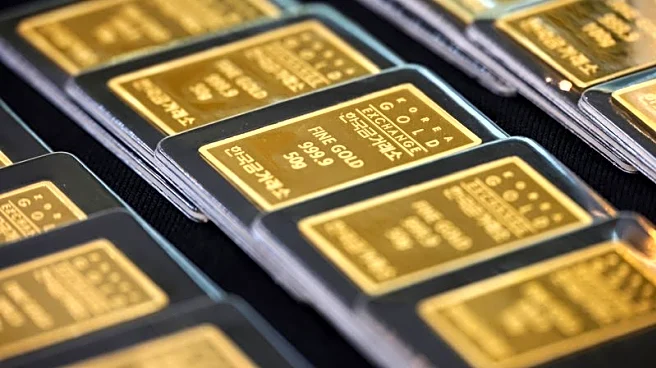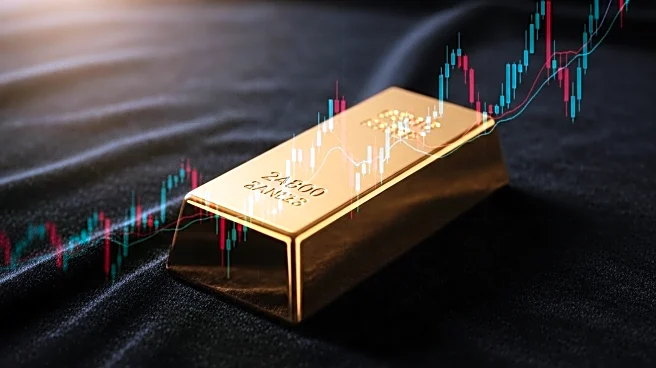What is the story about?
What's Happening?
Amy Gower, Metals & Mining Commodity Strategist at Morgan Stanley, has noted that gold's role is evolving beyond its traditional status as a safe-haven asset. Gold prices have risen over 38% this year, driven by central banks increasing their gold reserves and significant inflows into gold-backed ETFs. The metal is now seen as a barometer for central bank policies and geopolitical risks. Despite high prices affecting jewelry demand, gold's appeal remains strong due to inflation concerns and potential rate cuts by central banks.
Why It's Important?
Gold's evolving role reflects broader economic and geopolitical shifts, impacting investment strategies and central bank policies. As gold becomes a more integral part of central bank reserves, it underscores confidence in its long-term value. The increased interest from institutional investors suggests a shift in asset allocation strategies, potentially affecting other markets. The resilience of gold prices amidst economic uncertainty highlights its importance as a strategic asset, influencing global financial stability.
What's Next?
Morgan Stanley forecasts a 5% increase in gold prices for 2025, potentially reaching $3,800 per ounce. The anticipated Federal Reserve rate cuts could further boost gold prices, making it more affordable globally. The evolving demand dynamics, particularly in jewelry consumption, will be crucial in shaping future market trends. Investors and policymakers will need to adapt to these changes, considering gold's growing significance in economic and geopolitical contexts.
AI Generated Content
Do you find this article useful?















